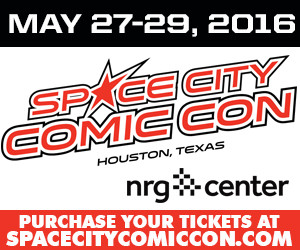Visual Vernacular: Artist Alex Wilhite
Alex Wilhite, “Energy,” 2024.
This installment of Visual Vernacular truly focuses on the wonder and importance of the visual. Local artist Alex Wilhite is known for his use of strong colors and energetic contrasts embodies nature along with its variety of colors in a meditative minimalist fashion. Working in both oil and encaustic, Wilhite uses homemade paint from a vast collection of pigments he owns to pay homage to the value of color. The artist notes that through nature, color changes every hour of every day from sunrise to sunset. The vividness of our earthly landscape is certainly seen and felt through Wilhite’s work.
His latest work features such visual movement and definition through the use of encaustic. Encaustic painting, also known as hot wax painting, involves using heated beeswax. Color pigments are added and then the mixture in liquid or paste form is then applied to a surface. In older works done in oil, the calmness and collectiveness of his hand is felt as your eye scans across the variants in color. For the works being featured in Ethos: Group Exhibition at Laura Rathe Fine Art, which opened on May 21, his use of rich and powerful colors are suspended in movement through his encaustic work. Paintings such as Waterfall allow for softer blues paired with white to ripple along the square viewing area. Vibrations and vivaciousness are felt through the use of radiant reds and bold blues in pieces such as “Energy.”
Energy is something you instantly receive while visiting with Alex. I have had the pleasure of knowing him for roughly four years. The communication and connection in conversation is something I treasure about him. His ability to say so much despite his Deafness is remarkable. One immediately learns of his love of learning, passion for his work, and his consciousness of the world around him and this leads to the most meaningful of exchanges. It was my pleasure to finally interview him in a more formal setting to share his story.
FPH: Tell me about your background in art?
Wilhite: I was born in Tuscumbia, Alabama and I was born Deaf. I started painting when I was 5 years old after my behavior was restored at the boarding school at the Central Institute for the Deaf, St. Louis from 1964 to 1976. My mother was gifted in needlepoint and a great tapestry artist who taught me the joys of being an artist. My mother was a great art teacher. I had an excellent art teacher in high school and I had a Deaf aunt who taught Gallaudet University.
FPH: What was your university experience like? How has it influenced you today?
Wilhite: At first, I went to National Technical Institute for the Deaf/Rochester Institute of Technology in Rochester and Gallaudet University in Washington, D.C. where I discovered there was no other major that I wanted to study as badly as Fine Art. I then transferred to the University of North Alabama in Florence, Alabama where I started as a Fine Art major in their undergraduate program but had to hired American Sign Language (ASL) Interpreter.
It was then that I became very focus as a serious artist. After uncovering my skill level, I applied to Pratt Institute in Brooklyn, New York. I was awarded Master of Fine Art in Painting in 1990. This entire collegiate experience was a challenge but with ASL to the Hearing Art World, I overcame. I had an excellent ASL interpreter who was from the Children of Deaf Adults (CODA) in New York City. Through this interpreter, my communication barrier was finally broken! One of the most important things that happened at the Pratt Institute was the fact that they taught me how to make oil and encaustic paint.
FPH: Travel has influenced your work in color spectrum and beyond. What are some of the things your trips have poured into your art?
Wilhite: When I was younger, my family lived in the Middle East in Kuwait. We traveled through Europe and North Africa where I discovered my love of travel and the influence of such travel had on my artistic experience during the late 1970’s. Out of all the art I have seen across the globe, Islamic Art is one of my biggest influences.
Alex Wilhite, “Sunshine Time,” 2024.
FPH: Minimal in presentation with bold colors, your work speaks to nature and more. Tell me about your approach to art.
Wilhite: I have diligently studied and expanded my knowledge of Islamic Art History and the Minimalist Art Movement in the 1960 and 1970’s. My collection includes rare pigments that date back to 1985. I love using rare pigments from Afghanistan, especially the rich blues.
FPH: What are the materials you mainly use in your art? What is the process like to make your pieces?
Wilhite: I make work in the encaustic medium, which involves mixing and cooking beeswax with pigments.
FPH: What are some of your most memorable exhibitions? I know that exhibiting in Russia was a huge opportunity for you.
Wilhite: Some memorable exhibitions include exhibiting at the Lincoln Center of Performance Art and the White House in Washington D.C. Other show highlights include those in the Chelsea Art District in Manhattan and the Solemy Museum in Petersburg, Russia.
FPH: What are some of your favorite artists? Are you inspired by other artists, musicians, writers, etc?
Wilhite: To name a few: Anselm Kiefer, Gerhart Reichter, Jasper John, Mark Rothko, Al Held, Frank Stella, Allan Watts, Joseph Campbell, Ellsworth Kelly, and John Yau (former art critic teacher).
FPH: Is there anything in particular you would like to share about your experience as an artist who uses sign language to communicate?
Wilhite: I feel that American Sign Language (ASL) is an extremely beautiful visual language. Also, I feel that Alexander Graham Bell (inventor telephone and teacher for the Deaf children) philosophy for the Deaf education is completely dead to me because I am Deaf and have never needed to learn how to use audio to listen. I must use my own eyes and hands rather than listen by ears that are unable to hear anything. I have overcome a lot and have moved away from audio to visual communication languages.
“Ethos: Group Exhibition” opens this Saturday, May 21 from 6pm to 9pm at Laura Rathe Fine Art (2707 Colquitt St). The exhibition runs through July 2.














